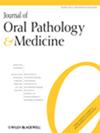Deep Learning-Based Image Classification and Segmentation on Digital Histopathology for Oral Squamous Cell Carcinoma: A Systematic Review and Meta-Analysis
Abstract
Background
Artificial intelligence (AI)-based tools have shown promise in histopathology image analysis in improving the accuracy of oral squamous cell carcinoma (OSCC) detection with intent to reduce human error.
Objectives
This systematic review and meta-analysis evaluated deep learning (DL) models for OSCC detection on histopathology images by assessing common diagnostic performance evaluation metrics for AI-based medical image analysis studies.
Methods
Diagnostic accuracy studies that used DL models for the analysis of histopathological images of OSCC compared to the reference standard were analyzed. Six databases (PubMed, Google Scholar, Scopus, Embase, ArXiv, and IEEE) were screened for publications without any time limitation. The QUADAS-2 tool was utilized to assess quality. The meta-analyses included only studies that reported true positives (TP), true negatives (TN), false positives (FP), and false negatives (FN) in their test sets.
Results
Of 1267 screened studies, 17 studies met the final inclusion criteria. DL methods such as image classification (n = 11) and segmentation (n = 3) were used, and some studies used combined methods (n = 3). On QUADAS-2 assessment, only three studies had a low risk of bias across all applicability domains. For segmentation studies, 0.97 was reported for accuracy, 0.97 for sensitivity, 0.98 for specificity, and 0.92 for Dice. For classification studies, accuracy was reported as 0.99, sensitivity 0.99, specificity 1.0, Dice 0.95, F1 score 0.98, and AUC 0.99. Meta-analysis showed pooled estimates of 0.98 sensitivity and 0.93 specificity.
Conclusion
Application of AI-based classification and segmentation methods on image analysis represents a fundamental shift in digital pathology. DL approaches demonstrated significantly high accuracy for OSCC detection on histopathology, comparable to that of human experts in some studies. Although AI-based models cannot replace a well-trained pathologist, they can assist through improving the objectivity and repeatability of the diagnosis while reducing variability and human error as a consequence of pathologist burnout.

 求助内容:
求助内容: 应助结果提醒方式:
应助结果提醒方式:


